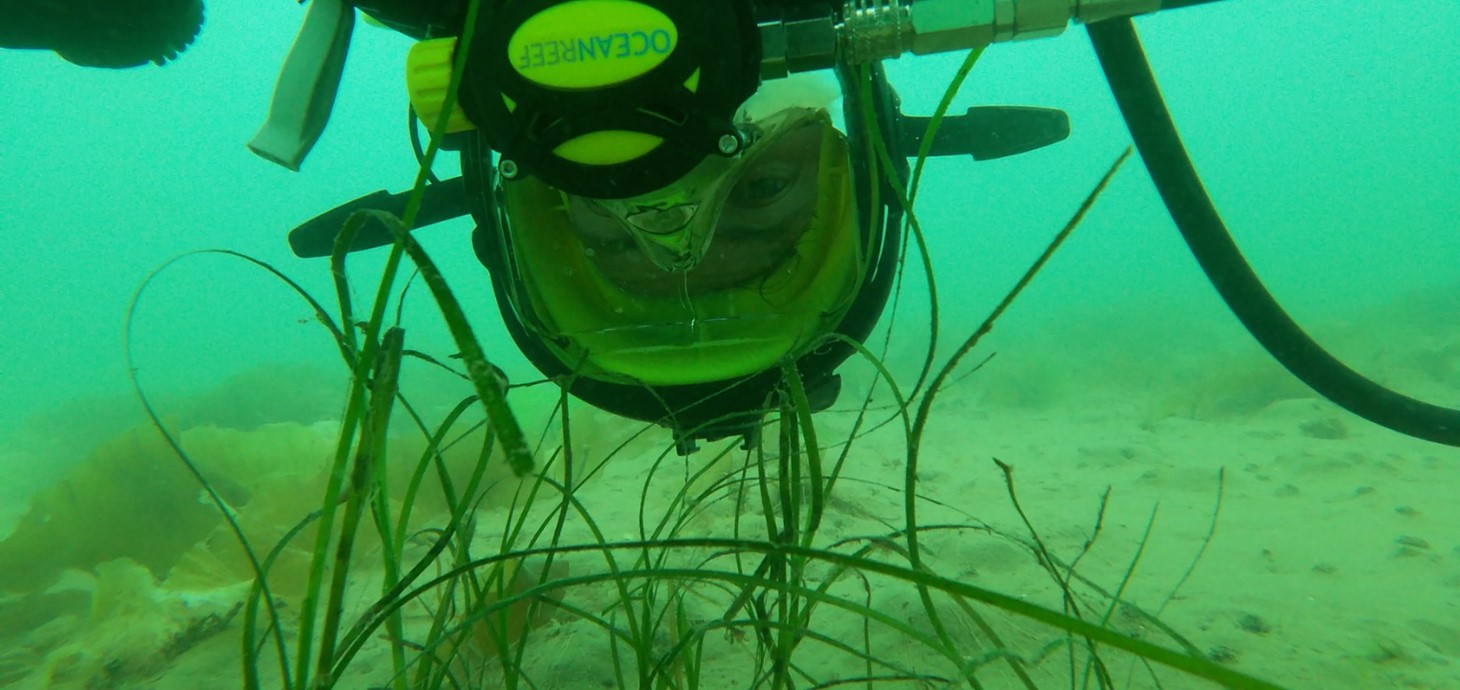
Swansea researchers carrying out seagrass survey off Dale, Pembrokeshire
A team of conservation scientists, including 11 Swansea University researchers, have published a landmark guide to support efforts to restore seagrass beds, which capture carbon more quickly than rainforests do.
The Seagrass Restoration Handbook, commissioned by the Environment Agency, is full of practical guidance for local authorities, community partnerships, charities and environmental organisations who want to restore seagrass beds in the UK and Ireland.
Seagrass – the world’s only underwater flowering plant – is not only vital for biodiversity, but also absorbs carbon dioxide, which helps to tackle climate change.
However, at least 44 per cent of the UK’s seagrass has disappeared since 1936, with 39 per cent of this happening in the last 30 years, according to recent research.
Often called an ‘ecosystem engineer’, seagrasses create a habitat for fish and other aquatic wildlife, connect different natural spaces, provide ecological services such as storing carbon and nitrogen, and improve water quality.
Swansea University experts from biosciences were part of the international team that produced the handbook, which was led by the University of Portsmouth and ZSL (Zoological Society of London).
The Swansea University team involved in the handbook were:
Lead authors: Dr Richard Unsworth, Dr Chiara Bertelli, Sam Rees, Dr Hannah Nuuttila
Contributing authors: Assoc Prof Jim Bull, Evie Furness, Lowri O’Neill
Swansea graduates/Project Seagrass: Eve Uncles, Issy Inman, Dr Richard Lilley, Ben Jones
Dr Richard Unsworth of Swansea University said:
“Seagrass meadows around the UK have been decimated. Their restoration can now play a part in a much-needed response to fighting the climate emergency and the biodiversity crisis.”
“Swansea University has played a leading role in spearheading seagrass restoration and conservation research around the UK in collaboration with its homegrown marine conservation charity Project Seagrass.
The creation of this handbook, with leading contributions from many staff, students and alumni from Biosciences reflects almost a decade of Swansea seagrass research in the UK and globally.”
Dr Joanne Preston of the Institute of Marine Sciences at the University of Portsmouth said:
“Now is the time for action; we can’t delay any longer the restoration of marine ecosystems on which humans depend, yet have largely destroyed. I hope this handbook will inspire and equip groups around the UK and beyond to get involved in restoring seagrass ecosystem and the wonderful biodiversity associated with them.”
Celine Gamble, ZSL Restoration Project Manager, said:
“Seagrass beds are like the forests of the ocean, but because they’re out of sight they tend to be overlooked – despite being critical mitigators of climate change and coastal protection, as well as home to hundreds of marine species.
“Our hope is that councils, environmental, and community groups across the UK and Ireland will use this guide to establish lost seagrass beds in their area, helping to mitigate climate change, flood risks and providing homes for 100’s of different marine species.”
Tony Juniper, CBE and Chair of Natural England, said:
“Seagrass beds hold significant quantities of carbon that would otherwise be in the atmosphere. They also help mitigate the impact of more extreme weather and sea-level rise while improving water quality and stabilising the seabed. In addition, lush, dense seagrass beds full of life show us what a healthy sea should look like and inspire us to protect our oceans.
“Although many of our seagrass beds are now within Marine Protected Areas, it is important to increase our ambition and add restoration to protection efforts.”
Sustainable futures, energy and the environment - Swansea University research
